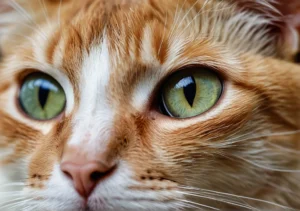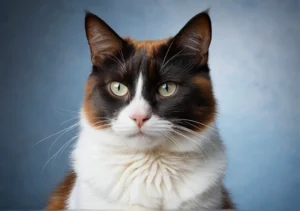Cats are intriguing creatures with many unique characteristics, one of which is their pale gums. Have you ever noticed that your feline friend’s gums are lighter in color than you expected? If so, you may be wondering why this is the case. In this blog post, we will explore the reasons behind why cats have pale gums.
Cats have pale gums due to their natural pigmentation, breed differences, and potential health issues.
Natural Pigmentation:
Cats are unique creatures with a range of coat colors and patterns that make them stand out. Their gum color is no exception. Cats naturally have pale gums compared to other animals, which can be attributed to their genetic makeup. The pigmentation of a cat’s gums is influenced by melanin, a pigment that determines the color of skin, hair, and even gums. In the case of cats, the amount of melanin present in their gums results in pale pink or white gums. This natural pigmentation variation is perfectly normal and not a cause for concern. It’s just one of the many unique characteristics that make cats so intriguing!
## Breed Differences: When it comes to cats, different breeds can vary greatly in terms of physical traits, including gum color. Genetics play a significant role in determining the coloration of a cat’s gums. Certain breeds, such as Siamese or Russian Blue, are known for having darker gums, while others, like Persians or Maine Coons, may have pale gums. This variation in gum color is linked to the specific characteristics of each breed and how their genetics manifest physically. If you notice any changes in your cat’s gum color, it’s essential to consult with a veterinarian to rule out any underlying health issues.
Remember, cats come in all shapes, sizes, and colors, and their gum color is just one of the many fascinating traits that make them unique. Give your feline friend some extra love and attention, regardless of the color of their gums!
Health Issues:
Pale gums in cats can be a sign of various underlying health issues that require prompt attention. Anemia, a condition where there is a low red blood cell count, can cause paleness in the gums due to decreased oxygen levels in the blood. Gingivitis, an inflammation of the gums, can also lead to pale gums in cats. Other medical conditions such as liver disease, kidney failure, or parasitic infections may also result in pale gums.
Signs to Watch For:
To ensure your cat’s health, it’s crucial to watch out for certain symptoms that may indicate a problem with their gum color. Look out for pale or white gums, lethargy, loss of appetite, weakness, and rapid breathing. If you notice any of these signs, it’s essential to seek veterinary care immediately to determine the underlying cause and provide necessary treatment.
Remember that pale gums in cats should never be ignored, as they could be a signal of a potentially serious health issue. Regular check-ups and prompt attention to changes in your cat’s gum color are key to maintaining their overall well-being. If you notice any abnormalities, don’t hesitate to consult your veterinarian for proper evaluation and treatment.
Helpful Resource: Learn more about cat health and wellness from the American Association of Feline Practitioners: aafp.org
Preventive Measures:
Maintaining your cat’s oral health is crucial in preventing gum issues and ensuring their gums remain healthy and pink. Regular brushing of your cat’s teeth can help remove plaque buildup and prevent gum disease. Providing dental treats designed to clean their teeth, along with chewing toys, can also aid in promoting good oral hygiene. Regular vet check-ups are essential for early detection of any potential gum issues, allowing for prompt treatment. Avoiding feeding your cat human food, especially sugary snacks, can help prevent dental problems and maintain their gum health.
Fun Facts About Cat Gums:
Did you know that a cat’s gums should be firm to the touch? If you press gently on your cat’s gums, they should quickly return to their normal pink color. Cats have a strong instinct to hide pain, so monitoring the color and condition of their gums can help detect any underlying health issues. Healthy cat gums are essential for overall well-being, as gum disease can lead to more serious health problems if left untreated. Remember, keeping an eye on your cat’s gum color can give you valuable insights into their overall health.
Helpful Resource : For more information on cat oral health and gum care, check out this resource from the American Veterinary Dental College: AVDC – Cat Dental Health.
How to Check Your Cat’s Gums:
First things first, checking your cat’s gums is essential for their overall health. To do this, gently lift your cat’s upper lip to reveal their gums. Healthy gums should be a nice pink color and moist to the touch. If you notice that your cat’s gums are pale instead of pink, it might indicate an underlying health issue. Keep an eye out for any changes in color or texture, as this could be a sign of dental problems, anemia, or other health concerns.
By regularly examining your cat’s gums at home, you can catch any potential issues early on and seek veterinary care if needed. Remember, prevention is key when it comes to your cat’s oral health!
Importance of Veterinary Care:
Regular veterinary check-ups are crucial for maintaining your cat’s overall health, including their gums. Veterinarians have the expertise to detect any underlying issues that may not be apparent to the untrained eye. They can perform thorough dental cleanings and provide guidance on how to keep your cat’s gums healthy.
In addition to regular check-ups, scheduling dental cleanings for your cat can help prevent gum disease and other oral health problems. A professional cleaning can remove tartar buildup and plaque that may be causing your cat’s gums to appear pale. Remember, your vet is your ally in keeping your furry friend healthy and happy!
Extra Tip: Providing your cat with dental treats or toys designed to promote oral health can help keep their gums in top condition between vet visits. Don’t underestimate the power of preventive care!
Alex, a passionate animal lover, has experience in training and understanding animal behavior. As a proud pet parent to two dogs and three cats, he founded AnimalReport.net to share insights from animal experts and expand his knowledge of the animal kingdom.




